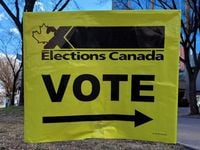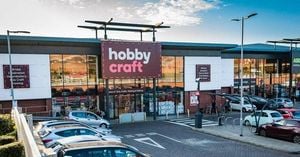Polls across Canada closed on April 29, 2025, marking the end of a short but intense election campaign. As Canadians cast their votes, they faced critical choices about who would lead the country through ongoing economic and diplomatic challenges, particularly in relation to the United States.
The Conservative Party emerged as a strong contender, especially in Atlantic Canada, where they reported a significant increase in vote share compared to the Liberals. In fact, a party needs to secure 172 seats to form a majority government, a target that weighs heavily on the minds of candidates and voters alike.
In a shocking turn of events during the final days of the campaign, NDP leader Jagmeet Singh revealed that he had been warned by the Royal Canadian Mounted Police (RCMP) two winters ago about a credible threat to his life, which he believed was linked to a foreign government. Singh made this disclosure on April 26, 2025, during a Filipino community event in Vancouver. Shortly after leaving the event, a tragic incident occurred when a driver in a black SUV plowed into a crowd, resulting in 11 fatalities and numerous injuries. Singh expressed his sorrow over the incident, stating, "We must come together in this time of grief and support one another."
On the campaign trail, Singh was visibly emotional as he addressed the tragedy in Penticton, B.C., the following day. His heartfelt response resonated with many, further highlighting the challenges faced by political leaders in these turbulent times.
Meanwhile, in Kelowna, B.C., voter turnout remained steady at polling stations, particularly in the riding of Okanagan Lake West-South Kelowna, where the Conservative Party aimed to make significant gains. This region has historically supported the Conservatives, and their strategy involved flipping two ridings currently held by the NDP.
In Victoria, B.C., NDP incumbent Laurel Collins was fighting to retain her seat against Liberal candidate Will Greaves. With the NDP holding six of the seven ridings on Vancouver Island, the stakes were high for both parties. Mark Carney, the Liberal leader, made three visits to Greater Victoria, including a late-night event in Saanich on April 27, 2025. Conservative leader Pierre Poilievre also campaigned in the region, holding a rally in Nanoose Bay that attracted 4,000 attendees.
In Quebec, several voting offices in Nunavik closed early due to severe weather, preventing residents in communities such as Salluit and Ivujuvik from casting their ballots. Ivujivik Mayor Adamie Kalingo voiced his frustration, stating, "We have neither ballots nor information on how to proceed in this election," which he deemed unfair. This situation raised concerns about voter disenfranchisement in the region.
As polls closed from Quebec to Alberta, results began to trickle in from over 200 ridings across the country. The CBC News Decision Desk, a critical component of election night coverage, prepared to make projections based on the incoming data. This team of experienced journalists analyzed riding histories and demographics to project potential outcomes.
In Calgary Centre, Conservative incumbent Greg McLean was vying for a third term against Liberal candidate Lindsay Luhnau. This race was expected to be one of the most competitive in Calgary, a city traditionally dominated by the Conservatives. In Calgary Confederation, Liberal candidate Corey Hogan hosted his election night party at a local bar, where the atmosphere was lively as supporters eagerly awaited the results.
In Newfoundland and Labrador, polls closed at 8:30 p.m. NST on April 28, making it the first province to begin counting ballots. With five new Members of Parliament guaranteed to be sent to Ottawa, the election held significant implications for the region. Political Science Professor Scott Matthews from Memorial University suggested a potential Liberal sweep in Newfoundland and Labrador, although he noted that St. John's East could prove competitive due to strong candidates from the NDP and Conservatives.
As the results began to unfold, early indications showed Liberal candidate Philip Earle gaining ground in Labrador, while incumbent Joanne Thompson from St. John's East was off to a strong start against her competitors. Thompson had previously secured her seat with 45.2 percent of the vote in the last election.
In the riding of Terra Nova-The Peninsulas, Conservative candidate Jonathan Rowe held a narrow lead over Liberal Anthony Germaine as the counting progressed. This riding, previously known as Bonavista-Burin-Trinity, was closely watched due to its potential to shift the balance of power.
Overall, the election was characterized by high stakes and intense competition, with many voters voicing concerns about economic stability, healthcare, and immigration. As results continued to come in, the atmosphere was charged with anticipation, reflecting the significance of this election for the future of Canada.
As the night progressed, the CBC Decision Desk began to make projections based on the incoming data, analyzing trends and historical voting patterns to provide insights into which parties were likely to secure the most seats. The excitement and tension of election night were palpable, with many Canadians eagerly awaiting the final results that would shape the country's political landscape.
In the end, the results of this election would not only determine the next government but also reflect the values and priorities of Canadians as they navigate the complexities of the modern world.




